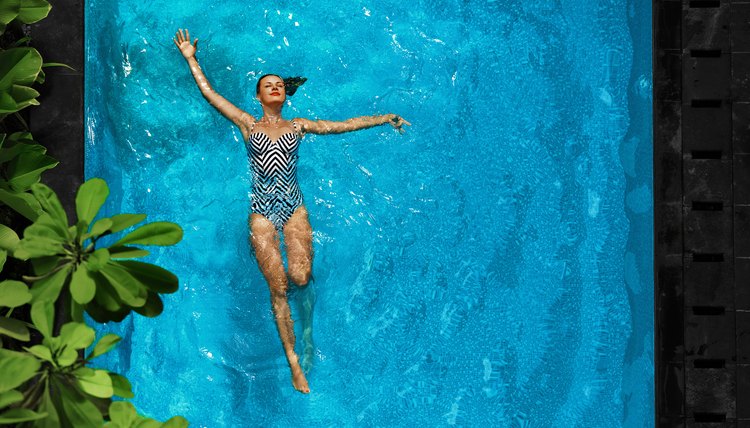What does fact checked mean?
At SportsRec, we strive to deliver objective content that is accurate and up-to-date. Our team periodically reviews articles in order to ensure content quality. The sources cited below consist of evidence from peer-reviewed journals, prominent medical organizations, academic associations, and government data.
- Centers for Disease Control and Prevention; Health Benefits of Water-Based Exercise; May 2011
- Harvard Health Publications: Calories Burned in 30 Minutes for People of Three Different Weights
The information contained on this site is for informational purposes only, and should not be used as a substitute for the advice of a professional health care provider. Please check with the appropriate physician regarding health questions and concerns. Although we strive to deliver accurate and up-to-date information, no guarantee to that effect is made.
Does Swimming Strengthen the Quadriceps?

The whole-body benefits of swimming are just one reason the sport is in the top five most-popular sports in the U.S., according to the Centers for Disease Control and Prevention. Because treading water requires force and strength, yet it doesn't have much of an impact on on your joints, swimming for exercise can help build quadriceps muscles.
Keep in mind, however, that swimming won't be as effective for strength-building as strength-training is. If you're really interested in building up your leg muscles, pair swimming with exercises such as squats and lunges, which target your quads.
The Quads
The quadriceps are a group of muscles along the front of your thighs. They include your rectus femoris, vastus intermedius, vastus medialis and vastus lateralis. These muscles make it possible for you to extend your knee, flex your hips and move about freely. Toning and strengthening this muscle group benefits your appearance and fitness level, helping you look nice in your shorts and tackle the stairs simultaneously.
Mix it Up
You'll have to do some work in the water to build your quadriceps muscles; drifting on a raft or floating in a tube are not going to cut it. Swimming laps burns calories — approximately 744 per hour in a 155 pound person according to Harvard Health — and increases your cardiovascular fitness.
Various strokes, including the backstroke, butterfly and crawl, also work the quadriceps by forcing you to kick against the water, thrusting it away from your body to achieve a forward or backward motion. However, because these movements require the use of your arms, you might focus better on your quadriceps by using a kickboard.
Toning Benefits
Toning your quadriceps is just one of the many benefits of swimming. Water-based exercises also improve your mental health and reduce symptoms that result from chronic conditions, such as arthritis and fibromyalgia. The buoyancy of the water protects joints from damage that can occur with other activities, such as running or hiking.
Don't Overdo It
Although swimming is good for the quadriceps, you risk injuring yourself if you overuse these muscles. Pain in the front of your thigh is a good indicator of a muscle tear. Swelling or bruising are other warnings signs, which you should report to your doctor immediately.
To prevent injury, warm up before exercising and stretch before and after your swim sessions. Grasp your right ankle in your right hand and pull your foot toward your buttocks. Repeat with the other foot. Once an injury occurs, you'll need rest and home remedies to promote healing and reduce pain. Although swimming may be off-limits with an injury, immersing yourself in water might help reduce swelling. Talk to your doctor about proper protocol.
References
Writer Bio
A health-care professional for more than 10 years, Rica Lewis has obtained numerous certifications in the industry. In 2006 she began channeling her knowledge into health-related articles for print and online publications. Her work has appeared in "Metroparent Magazine," "Anew Heart Healthcare Magazine" and community newspapers. Lewis earned a diploma from LongRidge Writers Institute.
